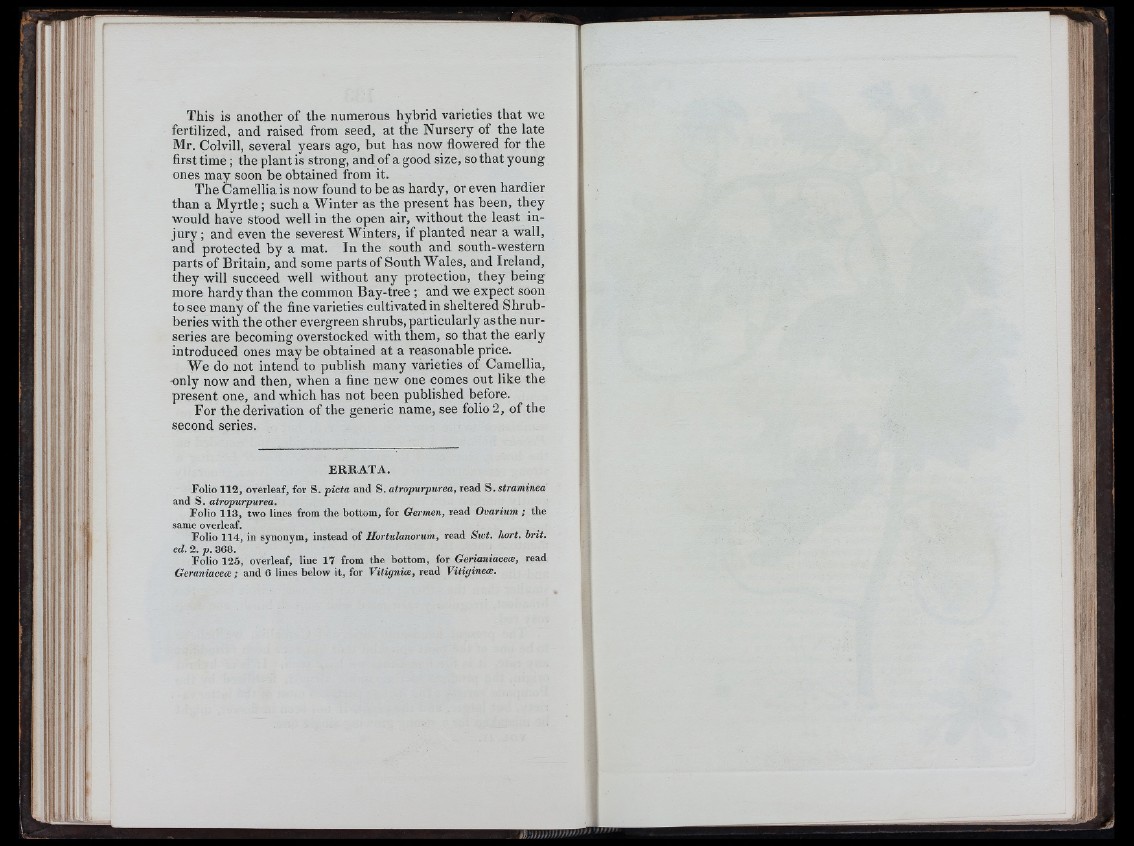
This is another of the numerous hybrid varieties that we
fertilized, and raised from seed, at the Nursery of the late
Mr. Colvill, several years ago, but has now flowered for the
first time; the plant is strong, and of a good size, so that young
ones may soon be obtained from it.
The Camellia is now found to be as hardy, or even hardier
than a Myrtle; such a Winter as the present has been, they
would have stood well in the open air, without the least injury;
and even the severest Winters, if planted near a wall,
and protected by a mat. In the south and south-western
parts of Britain, and some parts of South Wales, and Ireland,
they will succeed well without any protection, they being
more hardy than the common Bay-tree ; and we expect soon
to see many of the fine varieties cultivated in sheltered Shrubberies
with the other evergreen shrubs, particularly as the nurseries
are becoming overstocked with them, so that the early
introduced ones may be obtained at a reasonable price.
We do not intend to publish many varieties of Camellia,
only now and then, when a fine new one comes out like the
present one, and which has not been published before.
For the derivation of the generic name, see folio 2, of the
second series.
E R R A T A .
Folio 112, overleaf, for S. p ic ta and S. atropurpúrea, read S. straminea
and S. atropurpúrea.
Folio 113, two lines from the bottom, for Germen, read Ovarium, ; the
same overleaf.
Folio 114, in synonym, instead of Hortulanorum, read Swt. hort. brit.
ed. 2. p . 368.
Folio 125, overleaf, line 17 from the bottom, for Gerianiacece, read
Geraniacece ; and 6 lines below it, for Vitignioe, read Vitiginea.
if!
Ill